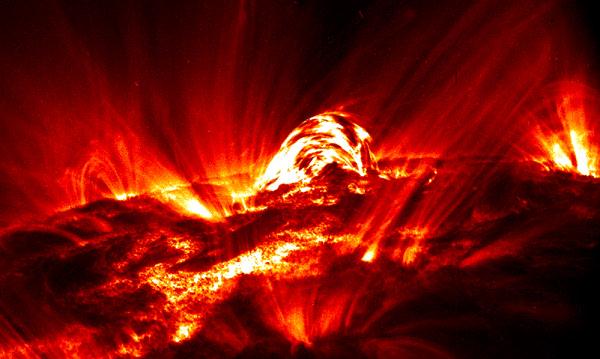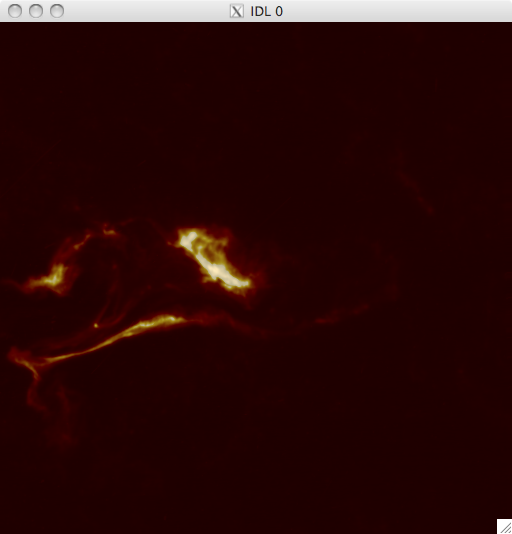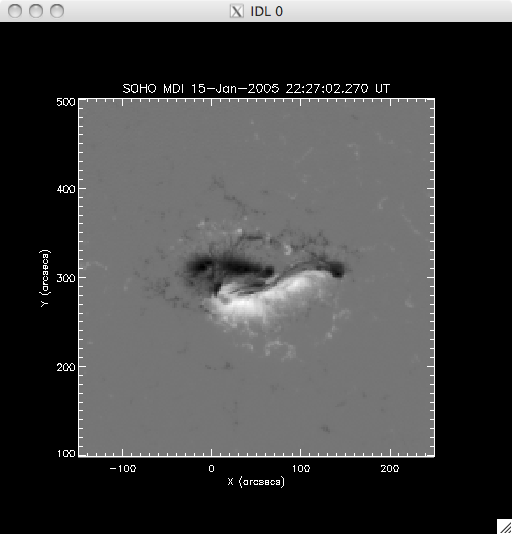
| Project
Outline: Solar flares are huge releases of energy in the Solar atmosphere, thought to be caused by the magnetic energy freed during a physical process known as magnetic reconnection. In magnetic reconnection, magnetic field lines (which emerge from the photosphere - the Sun's 'surface') break and reconnect with neighbouring lines, releasing the vast amounts of energy observed in the chromosphere. This energy heats the surrounding plasma, and has the effect of brightening the plasma at the ends of the field lines in the chromosphere. UV radiation can be emitted as can x-rays. My research project is looking into an aspect of the energetics of magnetic reconnection: Two ribbon flares are flares in which 'ribbons' of emission can be observed, usually in the UV region of the EM spectrum. These ribbons can be seen to evolve spatially as the flare proceeds However, if the same flare is observed in Hard X-Rays (HXRs), these ribbons are not observed. Instead, the HXR sources appear as kernels or footpoints in the chromosphere. I will be analysing the 15th Jan 2005 two-ribbon flare (an X2.6 Class flare) using UV 1600Å TRACE images, and the SOHO MDI Magnetogram of the region to compute several physical properties of the magnetic reconnection process. I will then compare these results to the HXR analysis performed by Prof. Jiong Qiu and Dr J. Cheng, which were obtained from RHESSI data. By comparing the UV and HXR analysis, conclusions can be drawn regarding the heating process at work as the flare occurs. Specifically, I will be measuring the reconnection rate of the flare as time progresses and comparing these to the light curves of the data. I will then look at the change in parallel distance along the Polarity Inversion Line (PIL) and the perpendicular distance outwards from the PIL. The last finding will be to observe which component of the reconnection is dominant, the parallel or perpendicular component,and to look briefly at energetics. The second part of my project will involve studying the brightening profiles of the individual pixels in the TRACE data to research the decay of the UV photons over the course of the flare. I will be fitting exponential functions to the data to try and observe a pattern in the rise and decay times of the radiation. It is this long UV decay that we think is responsible for the UV being detected as continuous ribbons. In reality, we think, the UV sources are also footpoints (maybe coinciding with HXR) but the long decay means we see 'residual' brightening. For more information about the Solar Physics at work in my project see the RHESSI Nuggets article Jiong wrote. For Prof. Jiong Qiu's homepage and weblog see, Jiong's Homepage and Jiong's Log. For Prof. Richard Canfield's homepage see, Richard's Homepage |

 |
Here is a movie of the Flare I am studying. The very bright portion is the 'front' of UV radiation...we think that the rest is the long decay in brightness. You can also see some flashes- these are cosmic rays. |